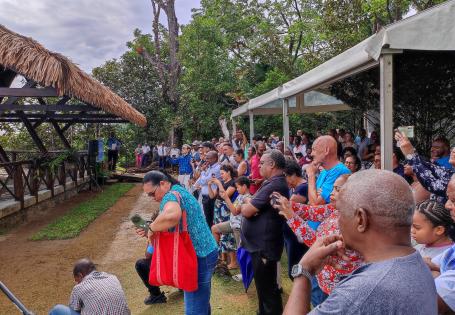Cultural heritage connects people to their history and creates bonds between the diverse communities, providing the basis for national integration, unity and prosperity.
The Seychelles Heritage Foundation welcomes you to its website. This website is the ideal platform to showcase and promote different aspects of Seychelles cultural heritage and to encourage Seychellois across the world to embrace and celebrate their culture. The site also offers information and news about the functions, mandate, programmes and activities of Seychelles Heritage Foundation.
We look forward to public participation and engagement through our website in the hope of developing greater interest towards the promotion and protection of our cultural heritage assets.
Benjamine Rose (Ms.)
Chief Executive Officer













